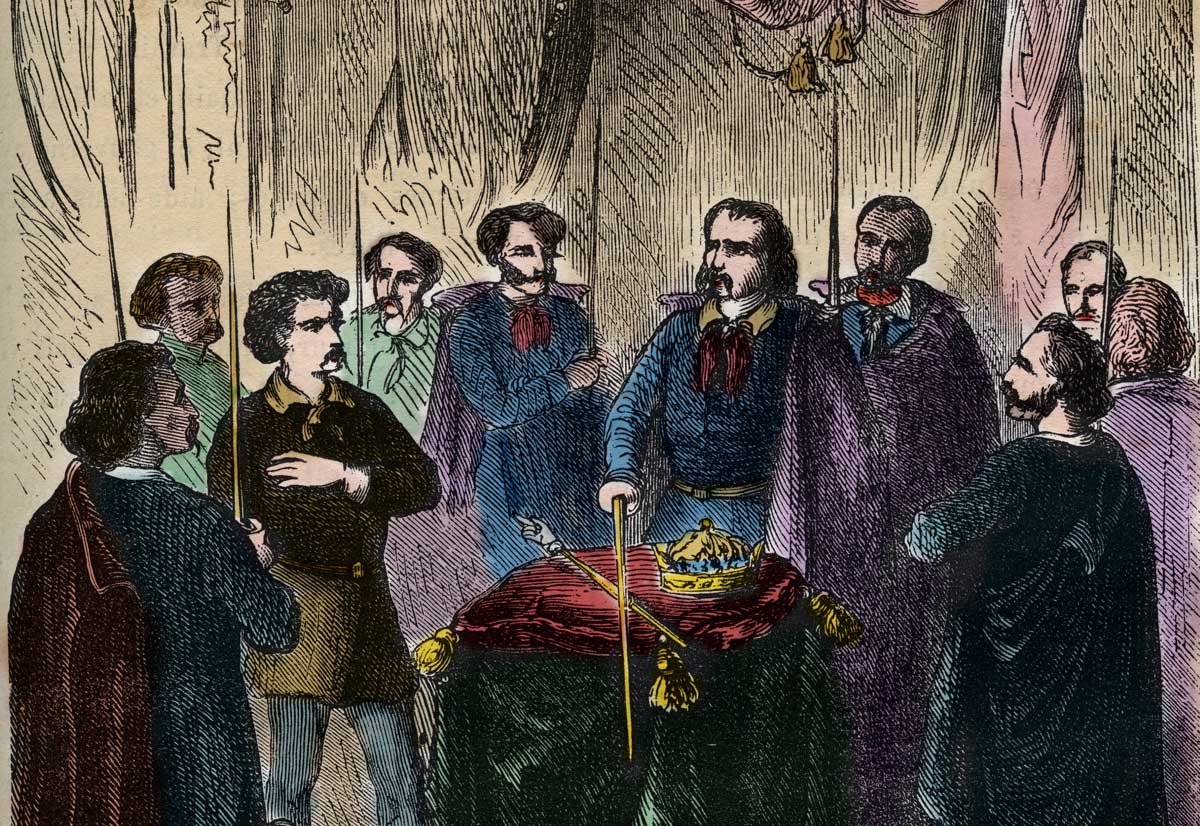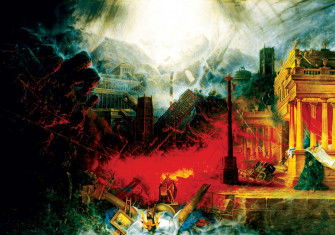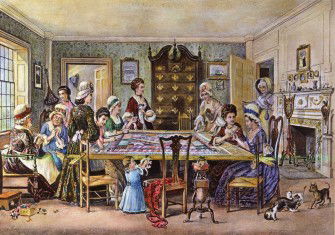Illuminating Conspiracy
Demonology is a long-established if little known political tradition in the United States.

New Haven, Connecticut, 4 July 1798. The President of Yale, Timothy Dwight, announces the name of an apocalyptic and conspiratorial threat facing America. Referencing the Book of Revelation, he declared that the end was close, the Antichrist was abroad in the land and agents of a conspiracy were filling the nation with impious people and false prophets. The conspiracy, he proclaimed, had already ravaged the Old World, unleashing the forces of atheism, enlightenment and revolution, and was in the process of extending its influence across the Atlantic. The spiritual and political order of the nation, of Christian civilisation itself, was at stake. And the greatest threat to its survival, Dwight declared with certainty, was the Order of the Illuminati.
Today the name ‘Illuminati’ conjures images of imagined threats and spurious connections played out with corkboard and string. Yet the Illuminati scare of the late 18th century is among the earliest, most paradigmatic examples of American cultural demonologies. Dwight was far from alone in his concerns. Earlier that year the Reverend Jedidiah Morse uttered similar proclamations from his Boston pulpit, calling ‘the Illuminated’ fomenters of revolution, advocates of sexual promiscuity and enemies of both patriotism and private property. Other Federalist preachers and publications followed suit. Narratives of Illuminati infiltrators exacerbated an existing atmosphere of partisan crisis generated by the threat of war with France in 1797.
Thomas Jefferson and the Democratic Republicans, opponents of John Adams’ incumbent Federalist party, were the primary targets of accusations of conspiracy, cast as Illuminati agents seeking to cause the moral and spiritual collapse of the nation.
It was with the Alien and Sedition Acts (1798-1801), however, that the most direct ramifications were felt. The French Revolution and its aftermath led to a fresh wave of immigrants, who became ripe targets for claims of subversion. Irish and French immigrants – many of the latter being, ironically, aristocrats displaced by the Revolution – became framed as Jacobin sympathisers, bringers of a threatening atheist Illuminism. Some were tried and convicted. For Federalist preachers, such as Morse, the Devil was abroad and his legions were comprised of Republicans, immigrants and the opposition press. Political critique was repackaged as sedition.
The path the Order of the Illuminati took from a small Bavarian college town secret society to the archetype of global occult conspiracy is an odd one. Established on 1 May 1776 in Ingolstadt with just five members, the Order was similar to other Enlightenment utopian ventures of the day, formed ostensibly for the purposes of eliminating superstition, promoting freedom and perfecting the human race. This did not sit well with conservative Catholics in the region and the Order was suppressed in 1785. Yet its shadow was long. As revolutionary fervour spread across Europe, rumours of its survival – and success – spread. By 1794 conservative writers were already presenting the Illuminati as the hidden hand behind the French Revolution.
The 1797 publication of the University of Edinburgh professor John Robison’s Proofs of Conspiracy and the Memoires pour servir a l’histoire du Jacobinisme by the former Jesuit priest Augustin de Barruel returned the Order firmly to prominence. The authors framed the Illuminati as not simply surviving, but as the secret force behind an international conspiracy to overthrow civil government and organised religion; one that had succeeded in Europe and was taking root in the United States. For Barruel, the Illuminati were the central pillar of a ‘triple conspiracy against God, the King and Society’. Both works circulated widely in New England and the sermons of Morse and Dwight drew on them, with Robison’s academic credentials being used to shield his claims from critique. Still, however, claims of the Illuminati threat began to falter under the burden of evidence. Although many Federalist clerics remained convinced of a diabolic plot, by 1799 fervour about the conspiracy was already waning.
Contrary to the prophetic declarations of conservative clerics, Jefferson’s election did not inaugurate Armageddon, though it did bring a series of quick reversals. Jefferson pardoned those convicted under the Acts and allowed the legislation to expire. Many people tarnished by the conspiracy waged a successful counterattack in the press, mocking and discrediting its promoters. In some ways, normality had returned. But the blend of apocalyptic speculation and political scapegoating and suppression that was behind the Illuminati scare revealed a pattern that has recurred throughout American history.
The Illuminati were not merely a political threat but a spiritual one, a threat to the Christian fabric of the nation. Demonology and conspiracy have long been bedfellows. The witch hunts of early modern Europe, given American expression a century before the Illuminati scare in Salem, Massachusetts, also imagined a shadowy plot of demonically guided dissidents seeking to subvert Christendom.
These conspiracies left their mark on Christian anti-internationalism in the US. When President Woodrow Wilson tried to raise support for the League of Nations, conservative preachers cast such internationalism as a harbinger of the Antichrist’s global empire. Contemporary narratives of a threatening ‘globalism’ undermining US sovereignty follow suit, drawing directly on the apocalyptic prophesying of 1990s televangelists, such as Pat Robertson. Yet it is for the groups that have been cast as both symbols and symptoms of internationalist plots that the scare’s mark is darkest: on the victims of the anti-Catholic and anti-Mormon movements of the 1820s and 1830s, the antisemitism of the early 20th century, the 1950s red scare and Islamophobic conspiracies of the post-9/11 era.
As with the European witch hunts, in both the Illuminati panic and its later echoes,the real threat came from the counterconspiracy rather than from any conspiracy itself. Imagining themselves at risk of dark powers, Federalist preachers and the press organised in opposition to those powers. The immediate result was a threat not just to those it targeted but to free speech. While this threat passed, the moment left scars that have not faded as readily. As one of the earliest incidents in America’s long history of political invocations of the demonic, the Illuminati scare warns that the danger of demonology is not the demon, but the demonologist who imagines demons to be fought.
S. Jonathon O’Donnell is Postdoctoral Fellow in the Clinton Institute for American Studies, University College Dublin.






